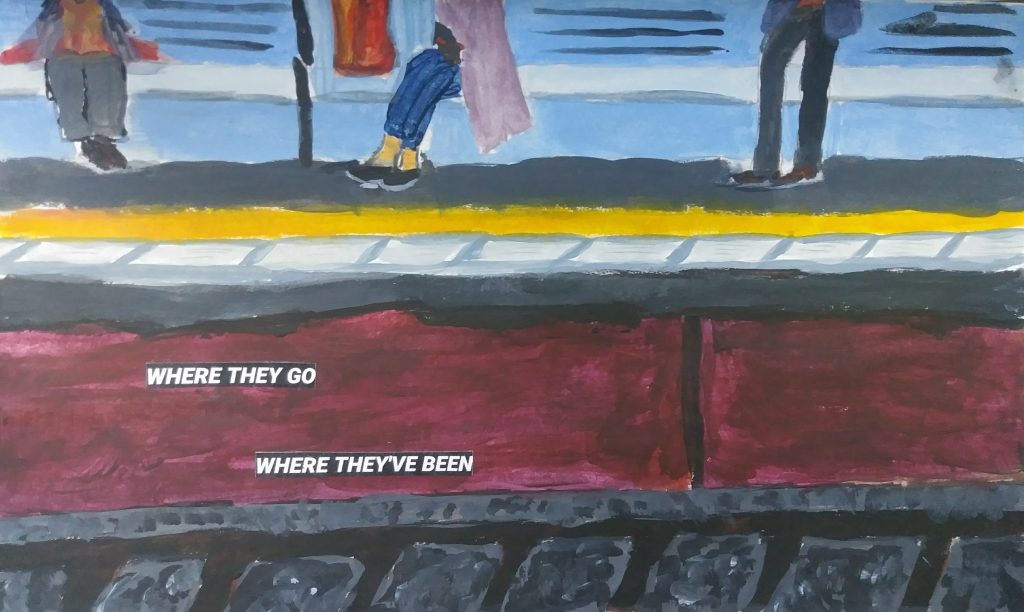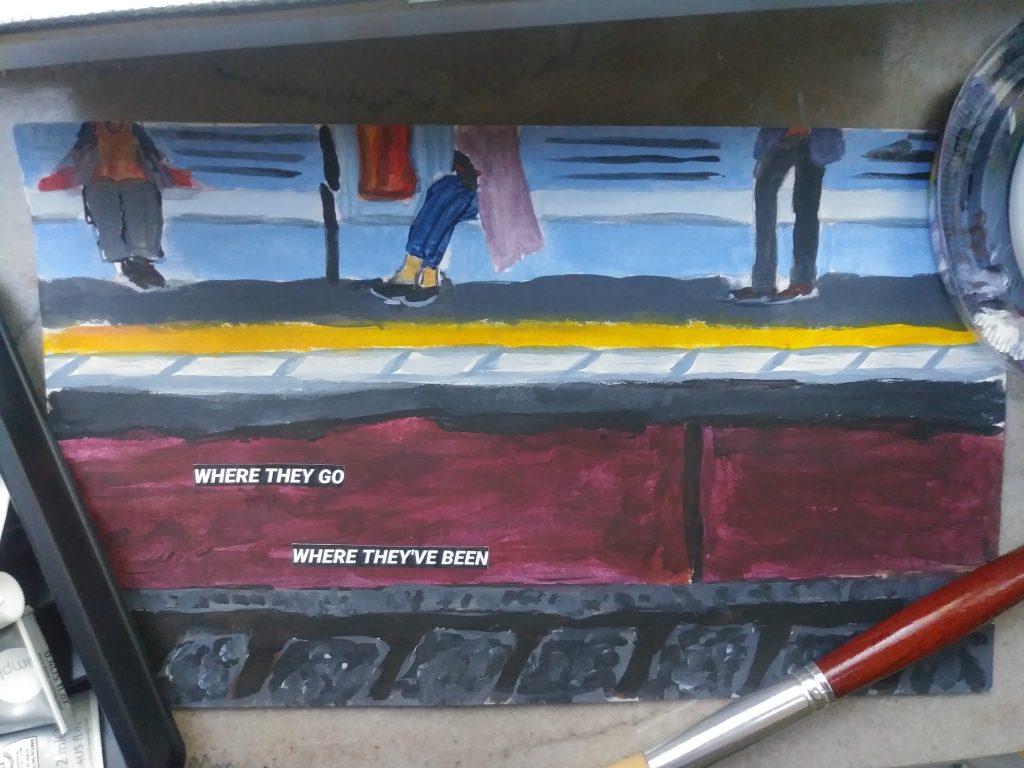
Contextualization
This creative project showcase my creative painting skills. I really relied on the cultural context of New York and expressed the atmosphere of being physically there through paints. This analysis helped me prepare to be a better cultural immigrant as I was exposed to a variety of different locations. My writing skills are also showcased in this artifact. Below I go into detail of what the meaning of my artwork is.
Introduction
I created a painting inspired by the declarative captions in Barbara Kruger’s work. Barbara Kruger’s Untitled (Everything will be okay) is located on the ground floor of Agnes Scott’s Student Center right next to Black Cat Cafe. Although her work consists of mostly black and white photographs, with the exception of Untitled (Everything will be okay), I decided to take a scene from our trip and turn it into a painting.
Description
The acrylic painting was done on a 9 by 5.5 inch piece of sketchbook paper. It is divided into three parts: the people, the space with text, and the subway tracks. The only words are two black rectangles caption “Where they go” and “Where they’ve been.” The colors drift from light blues to darker reds and into black shadows from top to bottom. At the top, you can see people sitting and waiting but you cannot see they’re faces nor their upper body. You can see that the three of them are spaced evenly apart. It’s a standstill and there does not seem to be any movement. Moving downwards, there is a yellow safety line set in place as a warning to the tracks below. There is no physical barrier, just the painted line. After the warning, the colors become darkened as you face the abyss, the emptiness between the people and the tracks. This is where the captioned blocks are – white words on black background. There are three words on each caption all in capital letters. The second caption is longer and contains a contraction. They are simple. They contrast highly against the brush strokes and blurry lines. It makes you pause, look up, and look down again. Below the space are the tracks, halfway visible on gray asphalt. Overall, the space in between, containing the captions, the least details, and the warm tone is the main focus of the piece. It makes you wonder what happens in that space.
Why
In my New York Subway presentation, I mentioned the paradox within the subway cars that Christoph Lindner discussed in Imagining New York. I was intrigued by the fact that such closely packed people can be so far away from each other, how silence remains in the screeching car, how stillness resides as the underground city flashes through the windows. Everyone together but apart, shoulder to shoulder but socially tense.
During the trip, as we waited to arrive to our destination, the one thing I noticed most on the subway was people’s shoes. Maybe it was because I am closer to the ground or because I wanted to avoid eye contact, but I stared for the duration. With feet moving, on and off the train, my thoughts wandered. Where are they from? Where are
they going? What do they do? Are they alone? These are the types of questions that I asked. I saw business shoes, construction shoes, school uniform shoes, heels, snow boots, all with different stories and experiences to tell. Have you heard the phrase “you don’t’ know someone unless you walked a mile in their shoes” or “put yourself in their shoes”? I thought what It would be like in their shoes, yet I would never know.
Painting
From the start I knew I wanted to paint my experience and the people. But only part of them because that is all I could really see. The rest was hidden, faces behind smart phones, books, laptops, looking down, talking sideways. It was difficult to really to know a person from observation. Likewise, the viewer also remains hidden therefore observing part of the entire scene. It’s mysterious. The entire picture is never truly given. Much of the space you could see serves little purpose other than to make you think. The text adds the questions that should be asked in context. Including the tracks describes a journey with no clear destination. It pushes the idea of the underground, a hidden world beneath the city.

